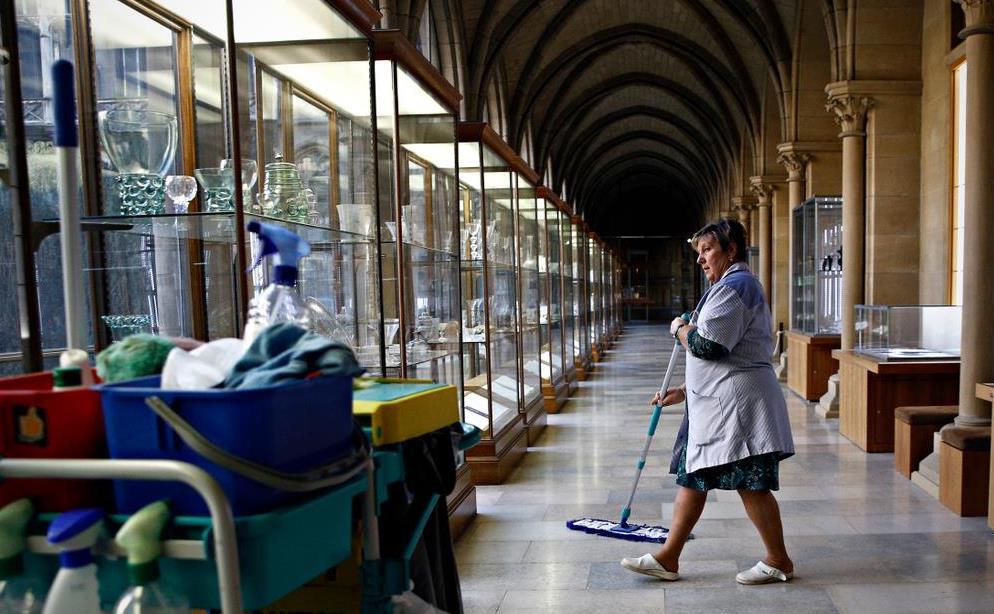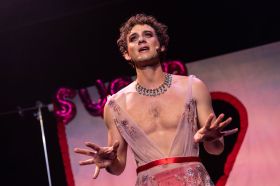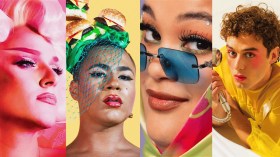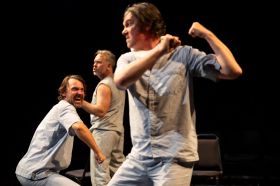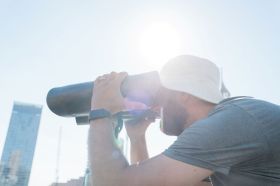Cultural strategy expert Andras Szanto recalls: ‘September 11, 2001, was a Tuesday. By that weekend, many of New York City’s museums had reopened, free to the public. I remember seeing the faces of the visitors and how communing inside the museum gave them a sense of comfort and security, of life eventually recapturing its familiar rhythm.’
Arts and culture have proven to help people’s wellbeing in times of crisis, and this has been further evidenced during the current COVID-19 lockdown, with so many Australians turning to crafts, art making and streamed arts programming while stuck at home.
However, the comment common across the sector is that it is ‘just not the same’, whether taking a virtual tour of an exhibition or streaming a concert online. The sensory immediacy of physical proximity offered by the arts is palpable, and absent in the virtual setting.
The consensus is that getting the doors open as soon as possible (while also maintaining health measures) is vital to the livelihood of the arts sector and the wellbeing of many.
But the arts are a diverse sector. Museums and art galleries are better placed to manage social distancing compared to theatres, given that audiences are fluid in the space; as larger venues they can spread audiences out more effectively.
Then there are touch-based museums – how will they adapt during eased re-openings?
WHAT THE DATA SAYS: PERFORMING VS VISUAL ARTS
Leading data analyst, Colleen Dilenschneider, says: ‘Performance-based cultural entities may face different (and steeper) challenges compared to exhibit-based cultural entities in an immediate post-coronavirus world.’ That is because some entities are perceived to pose a greater risk of virus spread, she added.
Dilenschneider is the Chief Market Engagement Officer for IMPACTS, a global leader in predictive market intelligence and related technologies. Her US study of over 6,000 arts industry respondents found that ‘While 25.3% of people would feel comfortable visiting an exhibit-based organization without any changes, only 14.7% of the respondents feel comfortable visiting a performing arts entity without significant changes in response to the coronavirus.
‘Even knowing facility cleaning procedures – which would improve perceived comfort levels for roughly 5% of visitors to exhibit-based organizations – matters more for visiting performance-based organizations (for whom nearly 17% cite knowledge of cleaning procedures as important to their perceived comfort and safety),’ Dilenschneider reported.
Her research also shows that arts venues with outdoor spaces are the most likely venues to be patronised first, as people will feel safe.
WHAT WILL IMPACT ATTENDANCE BEHAVIOURS?
As we are entering the next stage of conversations – from ‘Stay Home’ to ‘Stay Safe’ – there is a lot of industry chatter about how new behaviours will impact arts organisations.
Our recent ArtsHub poll suggests that people remain cautious of a second wave of infections.
‘Out of 635 people polled, 45.2% said they would wait a month from the time restrictions are lifted before attending a live event with 13.1% of readers stating they would only wait one week. However, 26.9% of readers are willing to attend live events from day one of restrictions being lifted, with other respondents stating that they would wait at least two months or longer (13.1%).’
READ: When will you return to the arts after COVID-19?
With today (18 May) being International Museums Day, the first museums are starting to re-open: the Museum and Art Gallery of the Northern Territory (MAGNT) in Darwin opens its doors today along with Lyons Cottage, the Museum of Central Australia and Megafauna Central.However, Discovery Centres in Darwin and Alice Springs will remain closed to adhere to physical distancing and hygiene measures.
It is in keeping with Dilenschneider’s findings which show that entities perceived to offer tactile experiences – such as science centers and childrens learning museums – will be among the slowest to open, with the risk through contact greatest. It is believed that they will feel the impact more significantly and longer than theatres.
Self-navigated gallery and museum experiences are perceived as the safest to visit. A good example is, the Art Gallery of South Australia (AGSA), which announced last week it will reopen its doors on Monday, 8 June.
MAGNT and AGSA are the only two state venues to set a clear date for re-opening at the time of writing.
ADAPTING YOUR REOPENING STRATEGY FOR AUDIENCE PERCEPTION
Information is key at this juncture. And there is still plenty of time to devise a strategy to help your organisation mitigate concerns upon reopening, but you need to start planning that strategy now.
The first question to address is: what can we learn from those perceptual barriers to entry, and how can arts organisations overcome a kind of “forever” condition of altered audience engagement, where behaviours have pushed beyond a pull-back point?
READ: Conquering fear in your reopening strategy
This is what you need to do:
- Make it known how your organisation is managing lines and crowds, making hand sanitiser available, and providing engaging outdoor programming, among other examples of safer activities.
- Potentially lower the capacity of your theatre for a while, seating people in every other chair. Maybe move performances outside.
- Maybe it’s integrating a virtual concert subscription into an ongoing business plan.
- Stopping audio tours for a while.
- Restrict the number of visitors at the entrance of each room within a museum.
Looking abroad for guidance, officials at the Royal Museums of Fine Arts in Brussels have issued strict safety measures that visitors must follow when the Old Masters Museum, part of the Royal Museums group, opens this week (19 May).
Safety measures include following a one-way circuit. A quota of admissions per hour will spread the number of visitors throughout the day and audio guides will not be offered ‘in order to reduce the risk of contamination’.
Meanwhile, the international museum ethics body Cimam (International Committee for Museums and Collections of Modern Art) has issued a set of Precautions for Museums during Covid-19 Pandemic, encompassing safety measures for re-opening and resuming activity at museums.
The recommendations were prepared by three Cimam board members: Eugene Tan, the director of National Gallery Singapore and Singapore Art Museum; Suhanya Raffel, the director of M+ Hong Kong; and Mami Kataoka, the president of Cimam and director of Mori Art Museum, Tokyo.
The document comprises 20 points under headings such as ‘visitor safety’ and ‘public communication’.
Currently, we are not seeing the same pattern of recommendations for reopening rolling out from the performing arts and live music sector. Perhaps it is time?
Just as museums are broad in context – from small volunteer-run community museums, to learning and science museums, and large state art galleries – the conditions and audiences in the performing arts vary.
Symphonies for example, tend to attract a more senior crowd. How will that impact their reopening strategy?
Dilenschneider’s data show that the average age of 61 for orchestra and symphony-goers in the US (compared to average ages of 37 for museum attendees), may mean both perceptually and medically they are among the most susceptible arts organisations in terms of the effects of COVID-19 and a distant reopening timeline.
Data has always been championed at a tool necessary for savvy arts management today. Even more so, data will help this sector reopen – and survive – while adapting to the known, rather than the unknown.
Further to publishing this article, the Art Gallery of NSW announced that it would be opening on 1 June.

